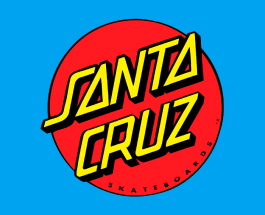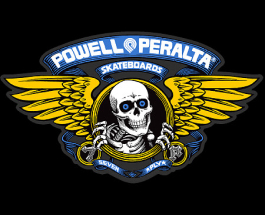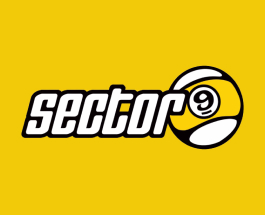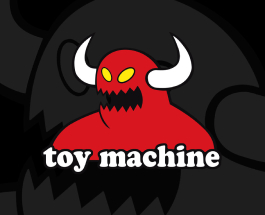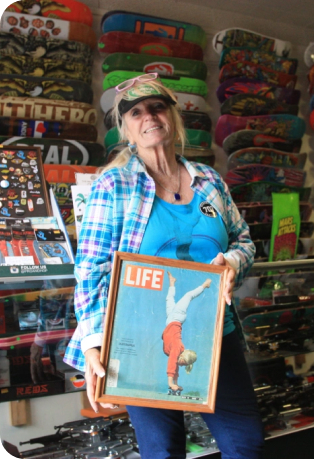
Patti McGee
Patti McGee is a former professional skateboarder. Her first skateboard was built by her brother in wood shop from her own shoe skate as a surprise. In 1964, she was the first Women's National Skateboard Champion, in Santa Monica CA. She was featured on the cover of Life magazine and the cover of the fourth issue of Skateboarder in 1965. Mcgee was also first female professional skateboarder and the first woman inducted into the Skateboarding Hall of Fame at IASC's Second Annual Skateboarding Hall of Fame Ceremony.

Tony Alva
Tony Alva is an American skateboarder, entrepreneur, and musician. He was a pioneer of vertical skateboarding and one of the original members of the Z-Boys. Alva's style was revolutionary and contrasted with the traditional style of the era. His skill, style and charismatic nature led him to become a professionally sponsored skateboarder. The Transworld Skateboarding Magazine ranked him eighth in its list of the "30 Most Influential skateboarders" of all time.

Rodney Mullen
Rodney Mullen is an American professional skateboarder who practices freestyle and street skateboarding. He won his first world freestyle championship at the age of 14, and in the following decade won 34 freestyle contests, establishing the most successful competitive run in skateboarding history. He is considered one of the most influential skaters, being credited for inventing numerous tricks like the flatground ollie, kickflip, heelflip, and 360-flip. As a result, he has been called the "Godfather of freestyle Skateboarding".

Tony Hawk
Tony Hawk, nicknamed Birdman, is an American professional skateboarder, entrepreneur, and the owner of the skateboard company Birdhouse. A pioneer of modern vertical skateboarding, Hawk completed the first documented "900" skateboarding trick in 1999. He also licensed a skateboarding video game series named after him published by Activision that same year. He retired from competing professionally in 2003 and is regarded as one of the most influential skateboarders of all time.
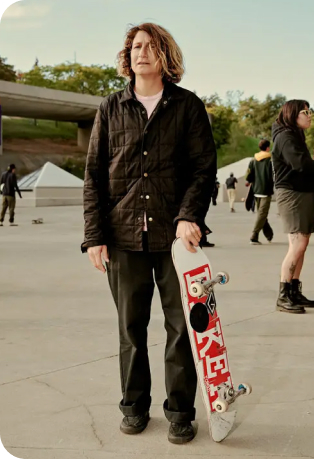
Elissa Steamer
Elissa Steamer (born July 31, 1975) is an American professional skateboarder. While Patti McGee was the first female pro skateboarder, Steamer is the first embedded symbol of women in professional skateboarding. Steamer showcased her skills during Summer X-Games competitions and took home multiple gold medals in the street competition. She is also known to have appeared as a playable character in Tony Hawk's Pro Skater (1999), Tony Hawk's Pro Skater 4 (2002), and Tony Hawk's Pro Skater 1 + 2 (2020).

Rob Dyrdek
Rob Dyrdek is an American entrepreneur, actor, producer, TV personality, and former professional skateboarder. He began skateboarding at the age of 11. Of his early interest in the sport, Dyrdek has stated, "I was so focused on becoming a pro skateboarder. I would sit in school and think about all the tricks I was going to do, then I'd get out of school and skate until they made me come inside." Dyrdek is best known for his roles in the MTV reality and variety shows Rob & Big, Rob Dyrdek's Fantasy Factory, and Ridiculousness.
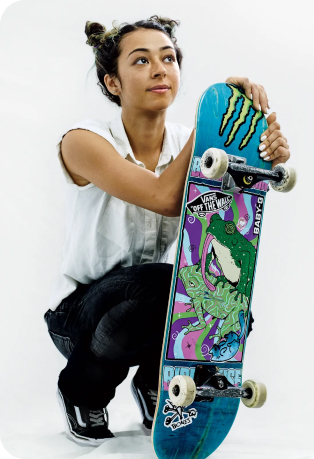
Lizzie Armanto
Lizzie Armanto is an American-Finnish professional skateboarder. She started skating in 2007 with her younger brother and developed a love for skating bowls and vert. Armanto appeared on the cover of the November 2016 issue of Transworld Skateboarding, becoming the first woman to do so in the magazine's thirty-year history. In January 2019, Armanto revealed that she joined the Finnish skateboarding national team and would represent the country at the 2020 Summer Olympics in Tokyo.

Nyjah Huston
Nyjah Huston is an American professional skateboarder and was the overall champion at competition series in 2010, 2012, 2014, 2017, and 2019. He qualified for the US Olympic Team in the Street Skateboarding discipline for the 2020 Tokyo Olympics - the first year of skateboarding in the Olympics. He qualified for the Olympic final out of his heat (heat 3), but didn't medal in the final. He is the highest paid skateboarder in the world. As of May 2013, Huston has won more prize money than any other skateboarder in history.


